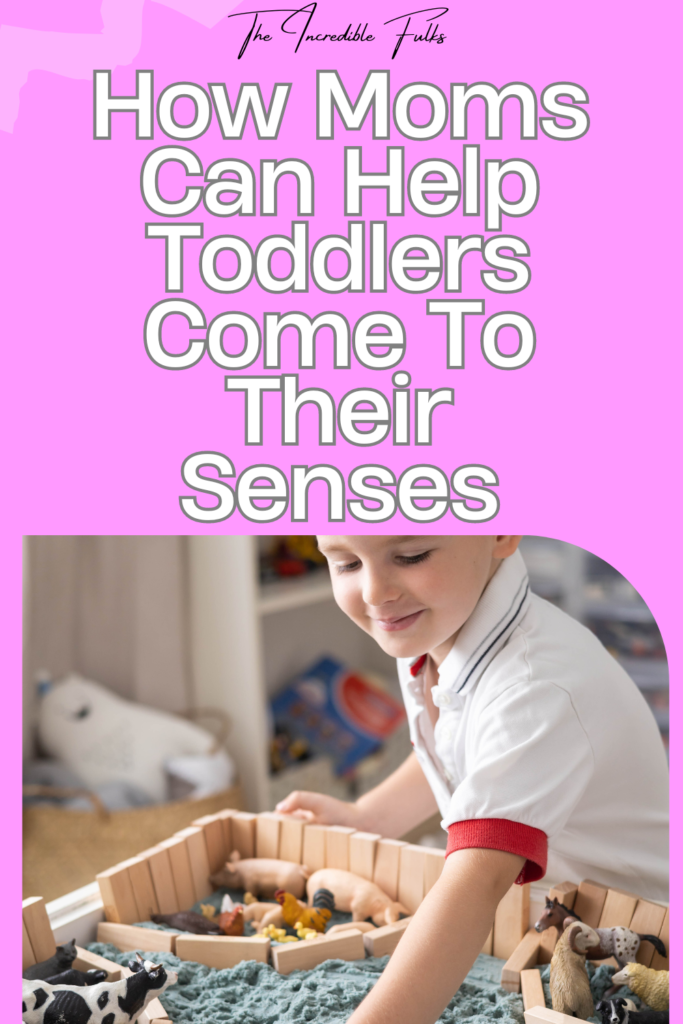Welcome to the next element of Toddler Homeschool; Sensory Play! If you are just jumping in to this series on Toddler Homeschool, be sure to check out the other articles in this series here.
Sensory play is just play that engages their 5 senses; touch, smell, sight, taste, and hearing. Engaging these senses help your toddlers brain develop and learn more about the world around them. By focusing on their senses, it allows toddlers to properly process and respond to their environment, grow cognitively in their problem solving skills, and of course, it trains their fine motor skills. Let's get into how you can include this type of play into your toddler's homeschool.
1. Create Sensory Bins
Sensory bins became all the rage years ago and since then companies all over the world have jumped on the trend. You can find a wide variety of ready-to-play sensory bins, like the ones shown below, in department stores and hobby stores across the U.S.. Sensory bins are a great and easy way to easily stimulate the senses for you toddler.
You can use a wide variety of materials, such as: sand, rice, oatmeal, beans, foam, soaps, snow, ice, felt, or water. You can even mix it up and add textures that are opposite such as mixing beans with mini marshmallows, or leaves with rocks. Be sure to add in some tools to help them scoop, pour, and divide the materials. You can even do a theme and add toys or bones to make things exciting.
2. Explore with Food
If you've ever heard “Don't play with your food,” while growing up, then you know that it has now become a new parenting trend to flip the script and encourage playing with food. Introducing different textures, temperatures, and flavors is encouraged as soon as your baby is 6 months old. As toddlers you can have fun by preparing one ingredient different ways, like with carrots. You can have cold carrots and warm carrots, soft, and hard, orange and purple. This makes mealtimes fun, plus encourages food exploration and expands your child's pallet.
3. Craft with Nature
Nature provides an infinite amount of sensory experiences for everyone. You can go on a nature walk and collect leaves, flowers, berries, twigs, feathers, mushrooms, and rocks. These can be used in lots of arts and crafts like sculptures or collages. The variety of textures and colors that nature provides will help your toddler develop tactile skills and help them grow an appreciation for nature.
4. Water Play
Most children love water play from playing with drops of water on the table, to immersing themselves in the pool every summer. You can play with water in almost any environment. There are even sensory bins for water play that you can get. When playing with water, be sure to include cups, funnels, sponges, and droppers to allow your toddler to experiment with pouring, squeezing, splashing, and dripping. You can even give a variety of objects to see which ones float or sink. Your toddler will learn about volume, cause and effect, and even buoyancy.
5. Sound Bottles
One of the simplest toys in the book is filling containers with beans or beads and shaking them. There is a reason this craft has been around for so long. It appeals to toddlers senses. You can use beads, rice, or even bells to make a variety of sounds. You can turn this in a game of guess that sound by covering the bottle or container up. There are lots of ready-to-play sound makers you can buy online too. Check out the ones below!
6. Aromatic Play
Most parents don't think of the nose when it comes to senses, but there are way more ways to appeal to smell now than there use to be. With essential oils dominating the market, you can add any scent to your child's playtime. You can use a base like playdough, slime, or rice, then add fragrances like vanilla, mint, or cinnamon. Ask your toddlers to describe what they smell and what it reminds them of. You can go a step further and ask it makes them feel such as calm or energized. You can add scents to almost every activity if you have the variety.
7. Tactile Paths
Tactile paths are basically things you walk on that have various textures. For example, you can lay out a strip of bubble wrap, a soft furry rug, or a squishy rubber mat. Or go outside barefoot and go from grass, to pavement, to pine straw or mulch. If you don't mind the mess, you can even add mud to the mix. Our feet can tell us so much information and toddlers love to experience it all. Having tactile paths can also help with balance and coordination. Benefits all around.

8. Light Exploration
An age old game of play with shadows is also considered a sensory activity for the eyes. You can use flashlights and different colored fabrics or papers to explore how light passes through different materials. You can show ho shadows are formed or how colors can be mixed. Colors are one of the first things that children relate to and experiment with, so have fun with this one and “be the light of the world.”
Safety First
Always ensure that all materials used in sensory play are safe, non-toxic, and appropriate for your toddler’s age to prevent choking hazards. Always supervise sensory activities closely.
Sensory play is a delightful and educational component of toddler homeschooling that fosters curiosity, enhances sensory development, and supports overall cognitive growth. By regularly incorporating these activities, you’ll provide a rich, engaging, and multisensory educational experience that encourages your toddler to explore and learn about the world in a holistic way.
Be sure to stay up to date with the Incredible Fulks and learn more about how MultiPath Learning can help you homeschool your children.











